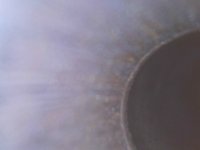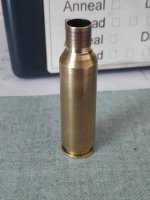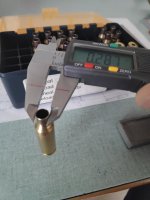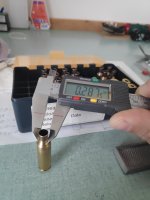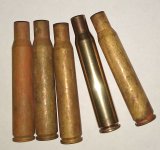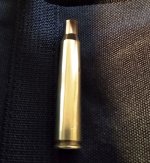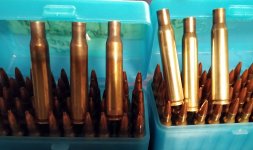Hello gentlemen,
after my last shooting session I measured my cases and I find some differences on headspace.
I tested some charges and the headspace are differenti from the low load to the ho load but from 1.4710" to 1.4700"
So I've made a resetting on the Forster FL Bushing sizing die for a 2 thou down from the fired case headspace, assuming that the 1.4710" of the hi loaded case are the start point.
My scheduling are the following:
- Bump the shoulder without the bushing for obtain the 2 thou of headspace (only for One or two case as reference).
Check on the chamber, ok!
- insert the bushing and resize the neck.
Check on the chamber, ok!
The bolt fall down free.
- expand the neck with mandrel.
Check un the chamber, ko!
The bolt don't fall down free, need finger help.
The headspace of the resized case are 1.4690"
I think that the mandrel, when open the neck, open also the apical section of the shoulder and change is angle.
If I think wrong can help me to solve this issue?
Thanks
after my last shooting session I measured my cases and I find some differences on headspace.
I tested some charges and the headspace are differenti from the low load to the ho load but from 1.4710" to 1.4700"
So I've made a resetting on the Forster FL Bushing sizing die for a 2 thou down from the fired case headspace, assuming that the 1.4710" of the hi loaded case are the start point.
My scheduling are the following:
- Bump the shoulder without the bushing for obtain the 2 thou of headspace (only for One or two case as reference).
Check on the chamber, ok!
- insert the bushing and resize the neck.
Check on the chamber, ok!
The bolt fall down free.
- expand the neck with mandrel.
Check un the chamber, ko!
The bolt don't fall down free, need finger help.
The headspace of the resized case are 1.4690"
I think that the mandrel, when open the neck, open also the apical section of the shoulder and change is angle.
If I think wrong can help me to solve this issue?
Thanks


